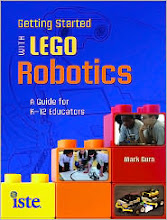“Jellyfish 'RoboCop' will help save the world's oceans by patrolling US waters like an aquatic spy
• Jellyfish are attractive candidates to mimic because of their ability to consume little energy owing to a lower metabolic rate than other marine species
• Cyro, the robotic jellyfish is powered by a rechargeable nickel metal hydride battery
• The skin is made of a thick layer of silicone, squishy in one's hand. It is placed over a bowl-shaped device containing the electronic guts of the robot
A life-like, autonomous robotic jellyfish the size and weight of a grown man is the latest weapon in the US Navy’s arsenal to guard the world’s oceans.
Virginia Tech College of Engineering researchers have unveiled the prototype robot, nicknamed Cyro. It is a larger model of a robotic jellyfish the same team made in 2012 – headed by Shashank Priya of Blacksburg, Virginia, and professor of mechanical engineering at Virginia Tech.
The earlier robot, dubbed RoboJelly, is roughly the size of a man's hand, and typical of jellyfish found along beaches…”
Read the full article at its source: http://www.dailymail.co.uk/sciencetech/article-2300966/Man-sized-robot-jellyfish-silicone-patrol-US-waters-aquatic-spy-study-life-ocean-floor.html
Student Focus Question: Why do you think robot designers are so interested in modeling their creations after real animals? Submit your thoughts using the "Comments" feature of this blog, below (feel free to include the name of your school, class, club, etc.)
.....................................................................................................
Click on book cover for information on Getting Started with LEGO Robotics.

Anyone who works with kids can do LEGO Robotics, a rich and highly motivating platform for important STEM Learning! (surprisingly affordable, too) This books explains it all!
Check out ROBOTICS for TEACHERS Podcast
www.roboticsforteachers.com


